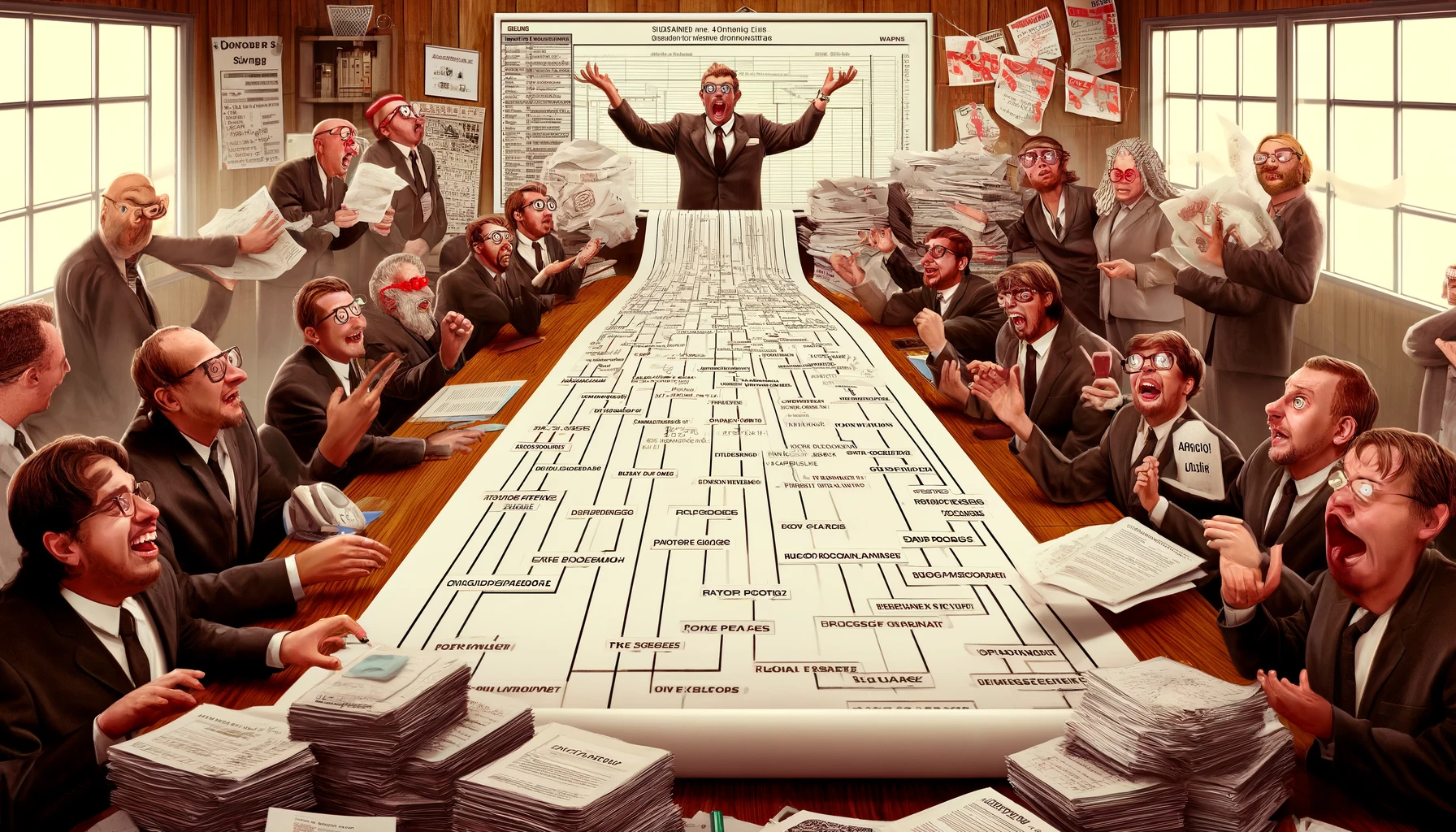Welcome to “Waterfall 2.0: Adding More Phases for Even Slower Delivery.” In this guide, we explore how to extend project timelines by adding unnecessary phases to the traditional Waterfall model. While not recommended for actual project management, this tutorial highlights the absurdity of over-complication.
Step 1: Introduction to Waterfall 2.0
Waterfall 2.0 is an enhancement of the classic Waterfall methodology. It introduces additional phases to slow down delivery and create more checkpoints, ensuring no stone is left unturned (or moved quickly). Embrace the complexity!
Step 2: Planning Phase
Start with an exhaustive planning phase. Break down every task into micro-tasks, and then subdivide those into nano-tasks. Ensure each subtask requires a separate approval. The goal is to spend as much time planning as possible before any actual work begins.
Step 3: Pre-Design Phase
Before jumping into design, add a pre-design phase. In this phase, draft conceptual designs that will be reviewed, revised, and approved multiple times. This ensures that the design phase itself is delayed significantly.
Step 4: Design Phase
Now move into the extended design phase. Here, involve every stakeholder in multiple rounds of feedback. Require detailed mockups and blueprints for even the smallest elements. Every pixel and line of code should be pre-approved before development starts.
Step 5: Pre-Development Phase
Before actual development, introduce a pre-development phase. Conduct extensive code reviews on non-existent code, ensuring that every theoretical line is perfect. This phase should be full of hypothetical scenarios and what-if analyses.
Step 6: Development Phase
Finally, the development phase begins. However, it is broken into mini-phases, each requiring separate sign-offs. Start with a prototype phase, followed by a first draft phase, and then a pre-final phase. Each phase should include extensive documentation and review.
Step 7: Pre-Testing Phase
Before testing, add a pre-testing phase. This involves creating test plans, test cases, and testing strategies that will be reviewed and revised multiple times. Ensure that no actual testing happens until everyone is satisfied with the test documentation.
Step 8: Testing Phase
The testing phase itself is also segmented. Start with alpha testing, followed by beta testing, and then gamma testing. Each segment should involve detailed bug tracking and fixes that require approval before moving to the next testing segment.
Step 9: Pre-Deployment Phase
Introduce a pre-deployment phase. This includes deployment rehearsals, dry runs, and multiple rounds of approvals. Ensure every stakeholder signs off on the deployment plan, even if it means several iterations.
Step 10: Deployment Phase
Finally, reach the deployment phase. This phase should be staggered, with soft launches followed by phased rollouts. Each stage of deployment requires monitoring, feedback, and potential rollbacks, ensuring the process takes as long as possible.
Conclusion
Congratulations! By following Waterfall 2.0, you have successfully ensured that your project will be delivered at a glacial pace. Embrace the delays and celebrate the extensive documentation. After all, the journey is far more important than the destination!
Enjoy your extended project timelines and remember: the slower, the better!

